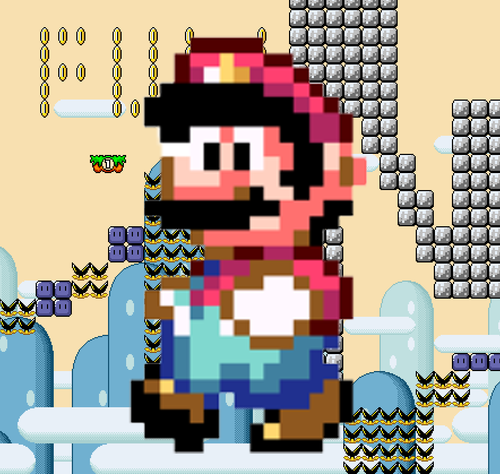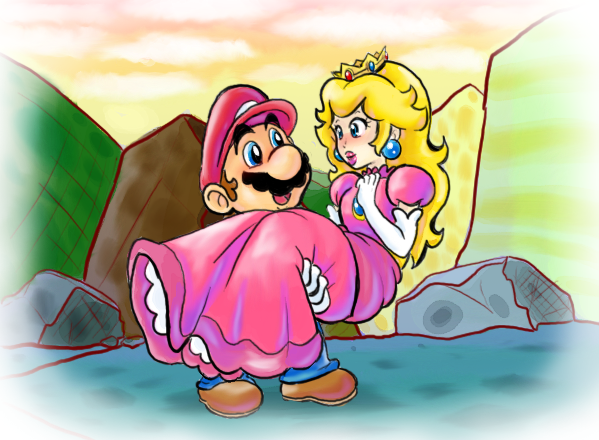Day 15: Mario, Save Princess Peach!
 Mario is in a sticky situation. He has
one life remaining
and he has one level to complete before he can save the love of his life, Princess Peach! If he beats this level he will save her, but if he doesn't, then it truly is
GAME OVER
.
Mario is in a sticky situation. He has
one life remaining
and he has one level to complete before he can save the love of his life, Princess Peach! If he beats this level he will save her, but if he doesn't, then it truly is
GAME OVER
.
This level is not easy and in fact he only has a 4 0 0 1 chance of beating the level.
But not all is lost. Regardless of whether he wins or loses, he has a 7 1 chance of obtaining a 1-UP in the level, which will give him an extra life; effectively another go.
What is the chance of Mario saving Princess Peach?
Your answer should be of the form k 1 where k is an integer. Find the value of k .

This problem is part of the Advent Calendar 2015 .
If you can see this then well done! You might guess that I am a Mario fan, and in fact I have made a custom Super Mario World ROM on my website . Try it out if you want!
The answer is 343.
This section requires Javascript.
You are seeing this because something didn't load right. We suggest you, (a) try
refreshing the page, (b) enabling javascript if it is disabled on your browser and,
finally, (c)
loading the
non-javascript version of this page
. We're sorry about the hassle.
1 solution
We can simplify this a bit. Let the probability that Mario saves Princess Peach be P . Mario can beat the level with probability 4 0 0 1 . The other possible way is to lose a level, and also obtain the 1-UP, after which his situation will be same as he started with. We obtain the following linear equation:
P = 4 0 0 1 + 4 0 0 3 9 9 × 7 1 × P
On solving this, we obtain P = 3 4 3 1 . □
Log in to reply
Very nice! I guess that is a bit like the proof of the sum of an infinite series, where you replace the remaining terms by a multiple of the value. Thank you!
Log in to reply
@Pranshu Gaba @Michael Ng It's also highly related to this idea .
You might enjoy this problem which I added, inspired by your fun problem!
Log in to reply
@Eli Ross – Thank you; I didn't know how powerful that technique was before! Nice problem too; I will have a think about it.
But why isnt it possible that Mario loses in the second effort as well...hence making it an infinite series...?
Log in to reply
If you keep on substitution the left P for the right P, you get your desired series.
It's an infinite series because Mario can lose but the game continues as long as he keeps getting 1UPs. If you look at @Michael Ng 's solution, you'll see everything expanded out (I did this too).
The only difference with @Pranshu Gaba 's solution he recognized that after losing + getting the 1UP "his situation will be same as he started with." This is easier to visualize in a state diagram.
First note that the information implies that Mario getting a 1-UP is independent of him winning or losing. So when he attempts the level there are four outcomes. However if Mario wins it doesn't matter whether he gets a 1-UP or not (as the game ends), so there are effectively three outcomes, shown in the tree diagram below:
Now note that the case in which Mario loses but has obtained a 1-UP will continue, as Mario has another attempt. Therefore our complete tree diagram looks as follows:
Therefore the probability of Mario winning is 4 0 0 1 + 4 0 0 1 × 4 0 0 5 7 + 4 0 0 1 × ( 4 0 0 5 7 ) 2 + 4 0 0 1 × ( 4 0 0 5 7 ) 3 + …
This is an infinite sum and therefore the probability is: 1 − r a = 1 − 4 0 0 5 7 4 0 0 1 = 3 4 3 1
And so the answer is 3 4 3 , as required.